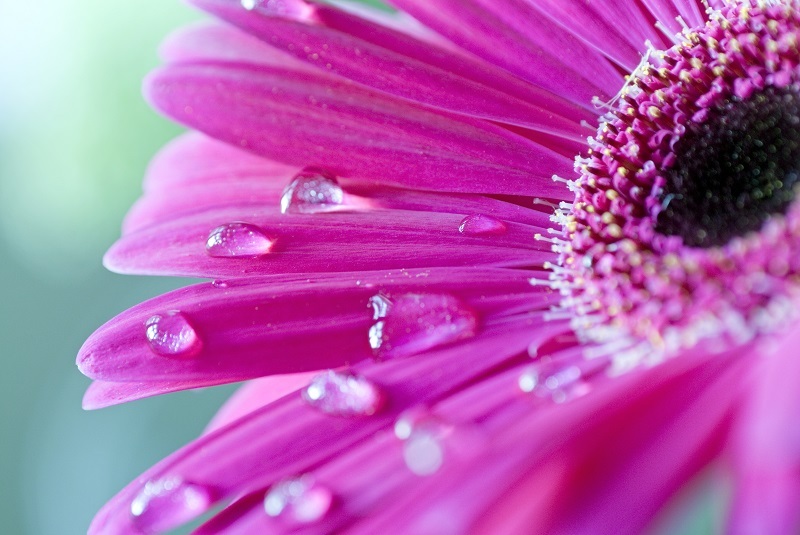Orchid Maintenance Tips
Posted on 26/01/2025
Orchids, with their captivating beauty and exotic flair, have fascinated gardeners and plant enthusiasts for centuries. While they may be seen as delicate and challenging to grow, with the right tips and maintenance, you can cultivate these stunning plants in your home or garden. This guide will provide an in-depth look at orchid maintenance tips, ensuring you can nurture these plants to bloom and thrive.
Understanding Orchid Varieties
Before diving into the maintenance, it's essential to understand the different types of orchids. Some popular varieties include:
1. Phalaenopsis (Moth Orchids) - Ideal for beginners due to their resilience and extended blooming periods.
2. Cattleya - Known for their large, fragrant flowers.
3. Dendrobium - Versatile and capable of adapting to various growing conditions.
4. Oncidium - Also known as "Dancing Ladies," they have tall flower spikes and intricate blooms.
Each variety has unique requirements, so tailor your care based on the orchid type you own.

Optimal Light Conditions
Orchids need the right amount of light to thrive. Here are some essential tips:
- Indirect Light: Orchids prefer bright, indirect sunlight. Direct sunlight can scorch the leaves, so placing them near east-facing windows is ideal.
- Adjusting Light Exposure: If leaves are too dark green, it may indicate insufficient light. Yellowing leaves, on the other hand, suggest too much light. Adjust accordingly.
Watering Techniques
Watering orchids can be tricky. Over-watering is one of the primary reasons orchids fail to thrive. Follow these guidelines:
- Root Environment: Orchids should not sit in water. Use pots with drainage holes to prevent waterlogging.
- Watering Frequency: Typically, water once a week. Increase frequency in hotter months and reduce during cooler periods.
- Morning Routine: Water orchids in the morning, giving them time to dry out during the day. Wet leaves at night can lead to rot.
Humidity and Air Circulation
Orchids hail from humid environments, so maintaining adequate humidity is crucial.
- Humidity Levels: Aim for humidity levels between 50-70%. Use a humidity tray or a humidifier if necessary.
- Air Circulation: Good air circulation prevents fungal growth. Ensure gentle airflow around your orchids, but avoid placing them directly in drafts.
Fertilizing Your Orchids
Orchids require specific nutrients to flourish:
- Balanced Fertilizer: Use a balanced orchid fertilizer (20-20-20) every other week. During the growth phase, feed more frequently, but dilute the solution to avoid over-fertilizing.
- Rest Period: Reduce fertilization during dormant periods when the orchid is not actively growing or blooming.
Repotting Orchids
Repotting is an essential aspect of orchid maintenance:
- Frequency: Repot every 1-2 years, even if the plant hasn't outgrown its pot. This helps refresh the growing medium and ensures healthy roots.
- Choosing a Medium: Use an orchid-specific potting mix, typically consisting of bark, perlite, and charcoal, ensuring good drainage and aeration.
Pruning and Training
Proper pruning can encourage healthy growth and more blooms:
- Removing Dead Tissue: Regularly prune dead or yellowing leaves and spent flowers.
- Training Spikes: Stake flower spikes to maintain an upright position and prevent breakage.
Pest Management
Orchids can be vulnerable to pests such as aphids, mealybugs, and spider mites:
- Regular Inspection: Frequently check the undersides of leaves and flower spikes for signs of pests.
- Natural Remedies: Use insecticidal soap or neem oil for infestations. Organic methods like introducing ladybugs can also be effective.
Pros and Cons
Pros:
1. Exquisite Beauty: Orchids add an elegant touch to any space.
2. Diverse Varieties: There's an orchid for every taste and environment.
3. Long Blooms: Many orchids bloom for weeks or even months.
Cons:
1. Delicate Balance: Requires careful attention to light, water, and humidity.
2. Potential Pest Issues: Susceptible to infestations if not properly monitored.
3. Need for Specialized Care: May necessitate specific fertilizers, potting mixes, and growth media.
Tips for Success
1. Observe and Adapt: Continuously monitor your orchid's health and adapt care routines accordingly.
2. Education: Stay informed about your specific orchid variety to understand its unique needs.
3. Consistency: Regular care routines and attention to detail will yield the best results.

Takeaways
A successful orchid maintenance routine involves understanding the plant's specific needs, providing optimal light and humidity, watering correctly, and regular monitoring for pests. The key is consistency and adaptability, ensuring your orchids get the care they need throughout their growth and blooming cycles.
Conclusion
Orchid maintenance may seem daunting at first, but with the right knowledge and dedication, it becomes a rewarding hobby. By understanding the specific requirements of your orchid variety and following these maintenance tips, you can enjoy the timeless beauty of these exquisite flowers right in your home. Happy growing!











